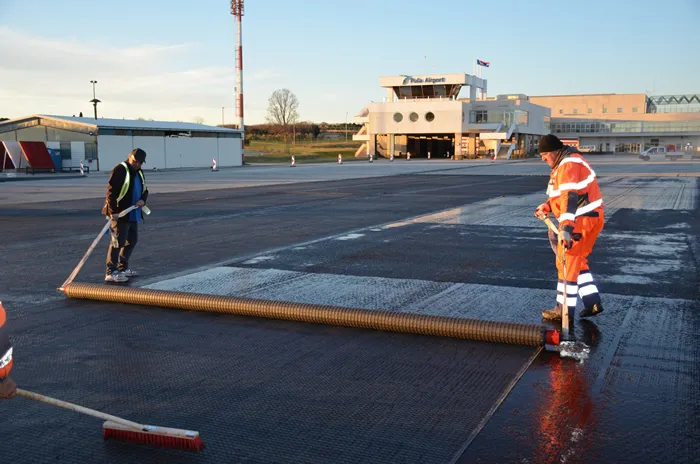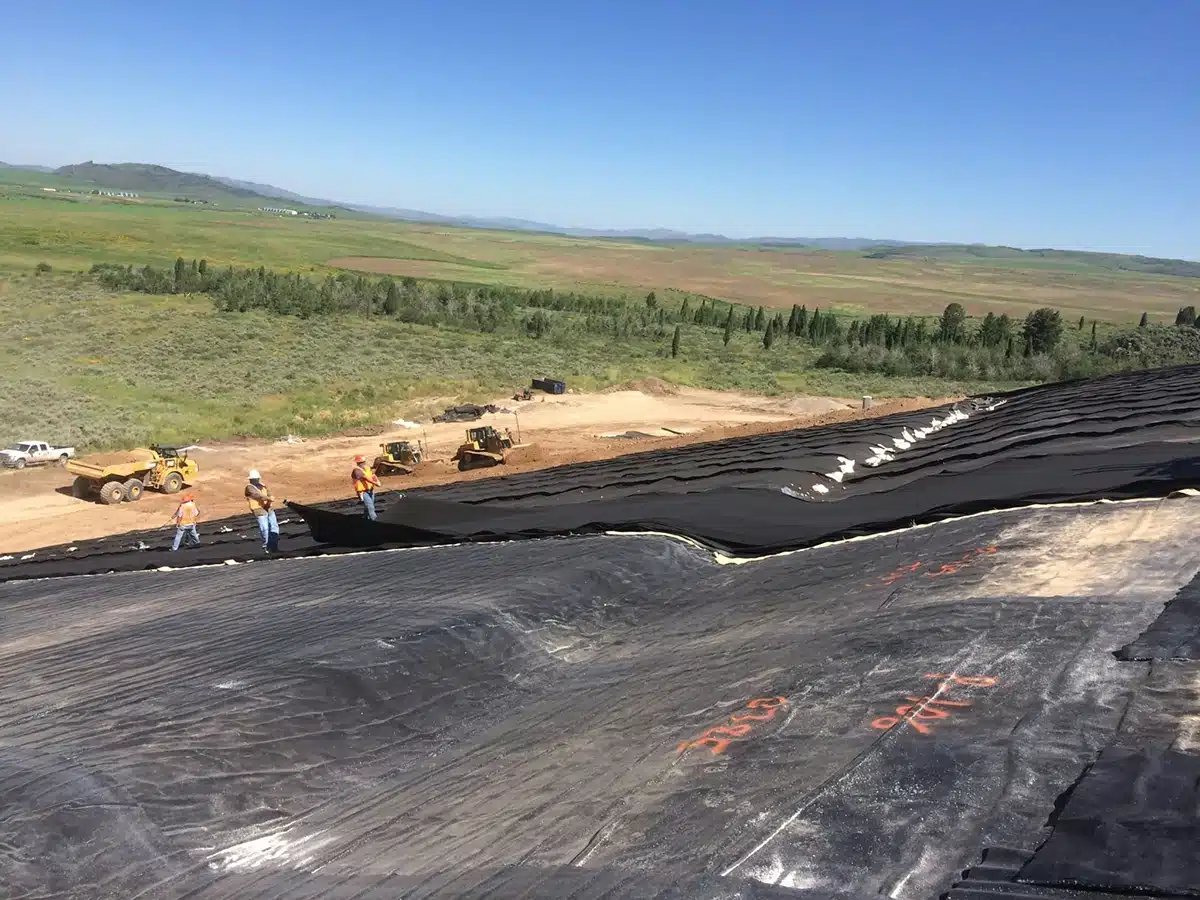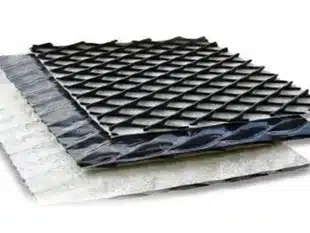+86-159 9860 6917
info@geofantex.com
geofantex@gmail.com
+86-400-8266163-44899
In the realm of civil engineering and environmental sustainability, the advent of geocomposite wall drains represents a significant leap forward in managing water efficiently and effectively. This innovative technology merges the benefits of geosynthetics with advanced drainage solutions, offering an eco-friendly, cost-effective, and durable method for water management in various applications. This article delves into the core of geocomposite wall drains, exploring their composition, differences from traditional materials like geotextiles, their functions, and the unique materials used in their manufacture.

What is a Geocomposite Drainage Layer?
A geocomposite drainage layer, consisting of a geonet bonded with geotextile layer(s) on one or both sides, is an engineered material designed to facilitate rapid water movement and reduce hydrostatic pressure against structures. This specific combination allows for a multifunctional product that not only offers high strength but also excellent drainage capabilities, utilizing the synergistic benefits of two or more geosynthetic materials. Such layers are crucial in applications including retaining walls, landfills, roadways, and foundation constructions, where effective water management is essential for structural integrity and longevity.
What is the Difference Between Geocomposite and Geotextile?
Although both geocomposites and geotextiles fall under the umbrella of geosynthetics, they serve different purposes and are constructed differently. Geotextiles are permeable fabrics which, by themselves, are used primarily for filtration and separation. In contrast, a geocomposite consists of a combination of one or more geosynthetics—specifically a geogrid, a geotextile, a geomembrane, and/or a geonet—with another material, such as soil or aggregate, to provide multifunctional benefits, including drainage, barrier protection, and reinforcement. This enhanced combination allows geocomposites to address more complex engineering problems than geotextiles alone can solve, broadening their applicability in civil engineering and environmental projects.

What is the Function of Geocomposites?
Geocomposites are designed to perform a comprehensive array of functions—separation, reinforcement, filtration, drainage, and containment—depending on their composition. The primary function, drainage, is essential to convey water away from structures, thereby preventing water logging and reducing hydrostatic pressure. In addition to drainage, their roles extend to filtration and separation to prevent the migration of fine particles, reinforcement to enhance the structural stability of soil, and in some instances, containment to provide protection against erosion. This multifunctionality underlines their versatility, making them exceptionally suitable for a wide range of applications in civil, environmental, and geotechnical engineering.
What is Geocomposite Material?
What are Geocomposite Materials? A geocomposite is made up of combinations like geotextile and geogrid, geogrid and geomembrane, geotextile, geogrid, and geomembrane, or any combination of these three elements plus another material (e.g., deformed plastic sheets, steel cables, or steel anchors). As composite materials, geocomposites merge different types of geosynthetics, each contributing its unique properties to the composite. Geotextiles enhance filtration and separation, geogrids provide reinforcement, geomembranes serve as impermeable barriers, and geonets promote efficient drainage. This strategic amalgamation of elements enables geocomposite materials to tackle multiple challenges in construction and environmental projects with a singular solution, offering a versatile and effective approach to modern engineering demands.
Geocomposite wall drains represent a sophisticated solution to modern engineering and environmental challenges. By leveraging the synergy between different geosynthetic materials, geocomposites offer unparalleled efficiency in drainage, filtration, reinforcement, and protection applications. Their adaptability to a wide range of situations—from infrastructure projects to environmental protection—marks them as a cornerstone technology in sustainable construction and water management. As the world continues to seek green and efficient solutions, the role of geocomposite materials in advancing these goals becomes ever more significant.



Get Free Sample
We’ll respond as soon as possible(within 12 hours)






















